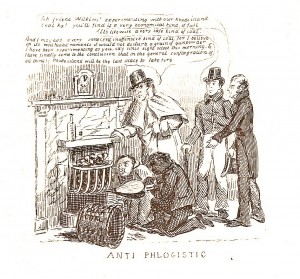 My research explores the varied economic, technological, and social elements of American industrialization. My first book, Old Dominion, Industrial Commonwealth: Coal, Politics, and Economy in Antebellum America (Johns Hopkins, 2004), compared the political economy of coal—loosely defined as the network of public and private institutions required for the growth of a mineral industry—in Virginia and Pennsylvania from the late eighteenth century through the Civil War years. I reconstructed the nexus of internal improvement programs, geological surveys, and corporate chartering policies in each state and compared the ways in which distinct institutional frameworks for the expansion of the coal industry emerged. A flexible and open policymaking process in Pennsylvania helped spur a dynamic coal trade, whereas Virginia’s conservative and agrarian policymaking regimes stymied the exploitation of the Old Dominion’s rich coal reserves. I continued my work in the history of energy, even as I expanded it beyond the focus of Old Dominion, Industrial Commonwealth, with articles dealing with the expansive nature of the 19th century American coal trade in the Journal of Policy History, on fuel philanthropy and its role in the consumption of mineral fuel in antebellum cities in the Journal of American History, and chapters in anthologies themed around southern industrialization and the rise of 19th century capitalism in the United States.
My research explores the varied economic, technological, and social elements of American industrialization. My first book, Old Dominion, Industrial Commonwealth: Coal, Politics, and Economy in Antebellum America (Johns Hopkins, 2004), compared the political economy of coal—loosely defined as the network of public and private institutions required for the growth of a mineral industry—in Virginia and Pennsylvania from the late eighteenth century through the Civil War years. I reconstructed the nexus of internal improvement programs, geological surveys, and corporate chartering policies in each state and compared the ways in which distinct institutional frameworks for the expansion of the coal industry emerged. A flexible and open policymaking process in Pennsylvania helped spur a dynamic coal trade, whereas Virginia’s conservative and agrarian policymaking regimes stymied the exploitation of the Old Dominion’s rich coal reserves. I continued my work in the history of energy, even as I expanded it beyond the focus of Old Dominion, Industrial Commonwealth, with articles dealing with the expansive nature of the 19th century American coal trade in the Journal of Policy History, on fuel philanthropy and its role in the consumption of mineral fuel in antebellum cities in the Journal of American History, and chapters in anthologies themed around southern industrialization and the rise of 19th century capitalism in the United States.
My most recent book entitled Home Fires: How Americans Kept Warm in the 19th Century (Johns Hopkins, 2014) explores how the challenge of staying warm in the industrializing North offers a window into the complex world of energy transitions, economic and technological change, and emerging consumerism through the struggles of urban families as they sought to adapt to the ever-changing nineteenth-century industrial landscape. The book depicts the problem of dwindling supplies of firewood during the Early American Republic and the search for technological alternatives; the hazards of cutting, digging, and drilling in the name of home heating; the trouble and expense of moving materials from place to place; the rise of steam power; the growth of an industrial economy; and economic efficiency questions, both at the individual household and regional levels. Home Fires combines my longstanding interests in energy policy with the history of science and technology, American capitalism, and material culture.
I am now working on a study of Catharine Furnace, an iron-making community outside of Fredericksburg, Virginia. Catharine Furnace was in blast during the 1830s and 1840s, and then reopened briefly during the Civil War. It’s probably best known as a military landmark on the Chancellorsville Battlefield, but the history of Catharine Furnace also tells us about industrial slavery, Virginia’s failed industrialization, and the environmental impact of the iron industry on the antebellum landscape.